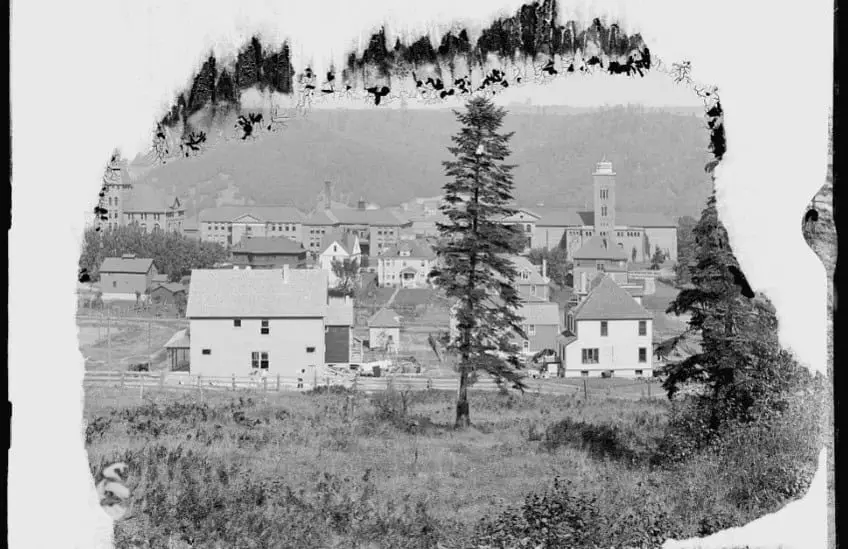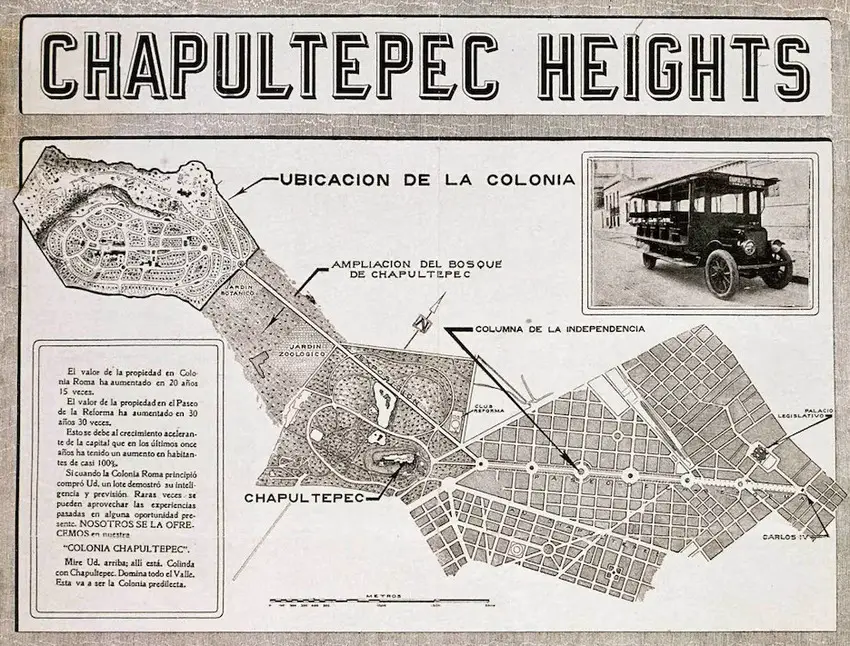Albert Edward Blair may not appear in many history books or be remembered as a figure of the Mexican Revolution. But his story is nothing short of extraordinary and completely bound up with the Revolution, which he took part in. When the fighting was over, Blair became a successful businessman and ultimately founded one of Mexico’s most upscale neighborhoods.
Born into a conservative family in 1890 in England, Blair moved as a child to Kentucky, in the United States, where his family owned a coal mine. His parents, fundamentalist Protestants, expected him to become the mine’s manager and follow the same conservative path. The young Albert, however, had different plans.

In May 1910, Blair had traveled to Mexico City as part of a research trip from the Michigan Mining School to study the underground challenges architect Antonio Rivas Mercado faced during the construction of the Angel of Independence monument. There he met Antonieta, Antonio’s 10-year-old daughter, who would eventually become Blair’s wife.
Albert Blair in the Revolution
Blair’s trip to Mexico, paired with the stories of social unrest he had heard from his university roommates Raúl and Julio Madero, enhanced his love for the country and anguish over its situation under the dictatorship of Porfirio Díaz. Raúl and Julio were the younger brothers of Francisco I. Madero, the northern liberal leader who would soon overthrow dictator Díaz to become president of Mexico.
The Maderos were amongst the wealthiest families in the country. They owned vast cattle ranches and cotton plantations in the north, henequen plantations in Yucatán, mines, breweries and smelting plants, as well as the oldest winery in the Americas. Francisco I. Madero used the family fortune to cover the expenses of his revolution.
Inspired and fascinated by the Madero family, Blair joined the Revolution after Francisco called on the country to revolt against the dictator on Nov. 20.

The bestselling novel “In the Shadow of the Angel,” written by Kathryn Blair, the wife of Antonieta’s and Albert’s only child, transcribes a telegram that Albert wrote to Julio and Raúl to express his revolutionary aspirations:
“Read about Serdán. Long live Madero. Inform me of the situation. Meet in San Antonio when you send a signal. Albert.”
Upon arrival to San Antonio in March 1911, Blair became a lieutenant in Madero’s army and was assigned to General Venustiano Carranza’s general staff. He served as part of a detachment with the mission of receiving and delivering ammunition in the border between Texas and Chihuahua, and participated in several battles
Blair’s bravery and loyalty to the Revolution earned him a place on the “victory train” which took Francisco I. Madero and a select group of allies from northern Mexico to Mexico City, where he entered as Mexico’s new President on June 7, 1911.

Two years later, in February 1913, Madero was killed during the coup known as the Ten Tragic Days. Blair kept a lower profile during the rest of the Revolution, but his partnership with the Madero family continued. At the age of 23, he became the representative in Mexico of all eight cotton haciendas owned by the Maderos, as well as the manager of their cattle farms and rubber haciendas. His power of attorney also included the collection of all dividends from the mines.
After the Revolution
As the Revolution came to a close, Albert married Antonieta Rivas Mercado in 1918. The couple had one son, Donald Antonio Blair. In 1921, Albert partnered with Mexican and foreign investors to develop an upscale neighborhood overlooking the Valley of Mexico, dubbed Chapultepec Heights. This neighborhood is today’s Lomas de Chapultepec, one of the country’s wealthiest neighborhoods.
Blair also became the Mexican representative of the Vacuum Oil Company, which sold its products in Mexico as Mobiloil; through a series of mergers, Vacuum eventually became the company we now know as ExxonMobil. With an avid eye for business, Blair managed to continue Vacuum’s business in Mexico after the oil expropriation decreed by President Lázaro Cárdenas in 1938.

Blair’s business endeavors thrived. His marriage, however, did not. He was controlling and jealous with Antonieta, which ultimately led her to request a divorce. This made her one of the first women to ask for a divorce in the elite circles of Mexico City.
The divorce trial lasted years. During that time, Donald lived with Antonieta while Blair took care of his businesses. Antonieta, meanwhile, was becoming one of Mexico’s most important arts patrons, funding theatrical and musical initiatives and editing books. Her divorce trial culminated with a Supreme Court ruling that granted Albert custody of Donald. Still, Antonieta kept the boy and took him to Paris without Albert’s knowledge after escaping the country due to political persecution following the failed presidential bid of José Vasconcelos, her lover at the time. Months later, in February 1931, a heartbroken Antonieta killed herself in Paris’ Notre Dame. Albert primarily lived in Mexico. To protect Donald from the gossip surrounding his mother’s suicide, he took him to live with his sister, Grace, in the U.S., where he visited the boy regularly.
Details on Blair’s later life are sparse, with no mention of the date of his death publicly available. Regardless of when it happened, it seems that Albert Blair’s story may not have ended with death: in 2019, no less than novelist Guadalupe Loaeza, author of “Las niñas bien,” published an article in which she revealed that she had owned the Lomas house where Donald and Kathryn Blair lived for many years and that Kathryn warned Loaeza that her father-in-law was a very annoying spectral presence around the house.
Sure enough, Loaeza’s time at Montes Alpes 625 was marked by disappearing trinkets and inexplicable squeezes on the rear. Finally, the novelist writes, she held a dinner and invited the Blairs. Donald went up to the room where his father had died; when he came back down, he was as white as a sheet. Father and son had made up. From then on, there were no more supernatural events around the house. It seems as if after seven decades, Albert Blair’s work in Mexico was done at last.
Gabriela Solis is a Mexican lawyer turned full-time writer. She was born and raised in Guadalajara and covers business, culture, lifestyle and travel for Mexico News Daily. You can follow her lifestyle blog Dunas y Palmeras.
